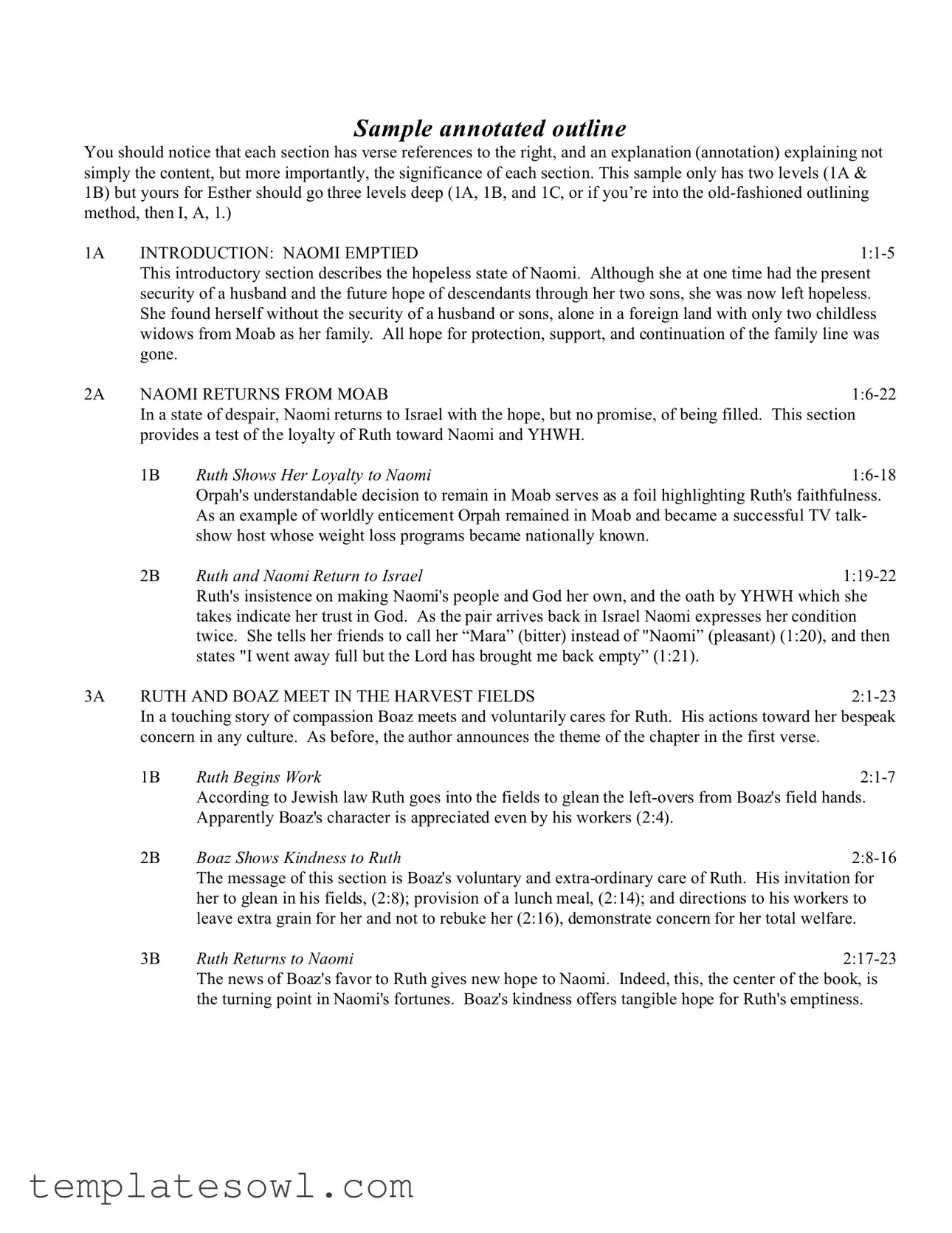What is a Sample Annotated Outline form?
The Sample Annotated Outline form serves as a structured template to organize key ideas and themes from a text. By incorporating both verse references and annotations, it highlights the significance of each section while guiding the reader through the content. This format goes beyond mere summarization, allowing for deeper insights into the overall message.
How is the Sample Annotated Outline structured?
This outline employs a multi-level hierarchy, allowing you to break down the content into detailed sections. It typically features a main topic, identified by a numeral (like 1A, 1B), followed by subtopics that dig deeper into specific themes or events. Your final outline for Esther should ideally go three levels deep, offering a comprehensive view of the subject matter.
What is the significance of annotations in the outline?
Annotations provide context and interpretation for each section within the outline. While verses are critical in guiding the text, annotations clarify their meaning, significance, and impact within the broader narrative. This enhances understanding and allows for a richer engagement with the material.
Can I customize the Sample Annotated Outline to suit my needs?
Absolutely! While the form provides a solid foundation, it encourages personalization. You can modify headings, add or remove sections, and adjust the depth of the outline to align with your objectives and insights. This adaptability ensures that you capture the essence of what you want to convey.
What is the importance of verse references in the outline?
Verse references anchor your outline in specific text, facilitating cross-referencing and further study. They help ensure that your analysis remains rooted in the source material. Additionally, these references guide readers to key moments within the narrative, enriching their understanding of the subject at hand.
How can I ensure the clarity of my Sample Annotated Outline?
To maintain clarity, strive for consistent formatting and concise annotations. Limit the details in each section to focus on significant points. Utilize bullet points for easier readability, and make sure each level of depth is clearly marked. This approach will enhance the overall coherence of your outline.
Is there a specific audience for the Sample Annotated Outline?
This outline can be beneficial for a diverse audience, especially those engaged in academic studies, teaching, or anyone who wishes to deepen their understanding of a text. Whether you're a student, educator, or even a casual reader, the format can aid in grasping complex ideas more effectively.
How does the Sample Annotated Outline relate to the text of Esther?
In relation to the text of Esther, the Sample Annotated Outline systematically dissects the narrative, emphasizing its themes of loyalty, redemption, and transformation. Each section and interpretation enhances comprehension of how Esther’s story unfolds and its importance in the greater historical and spiritual context.
